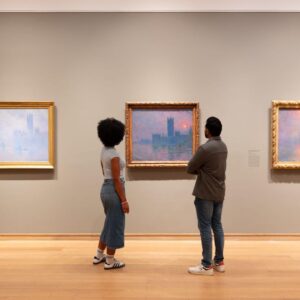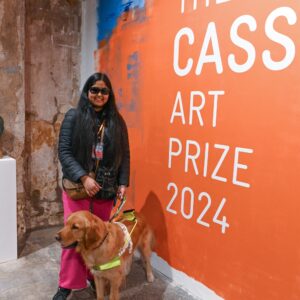Former fairground showman Billy Butlin opened his first holiday camp at Skegness, Lincolnshire in 1936. Butlin’s vision was to provide British working class families with ‘a weeks holiday for a week’s pay’. This idea quickly became a phenomenon. Between the mid 1930s and mid 1970s, Butlin operated ten seaside camps that played host to millions of holidaymakers, generating at least three generations of ‘great Butlin’s memories’.

During the late 1970s, Butlin’s camps went into decline, in part due to travel companies offering cheap package holidays to ‘the continent’, but also due to a change in values. As the Second World War and military service disappeared from memory, so too did the desire to ‘join in the fun’, have one’s holiday micro–managed, or win a trophy for having knobbly knees. In a short window after the ‘Swinging Sixties’ and before Thatcherism, British people woke up to a freedom that they felt they had earned, and chose the Mediterranean over Minehead. Many Butlin’s camps closed down and British seaside towns would never recover.
In Welcome To Saxnot artist Scott King proposes the new town of Saxnot as an invention of the fictional, Butlin’s inspired brand ‘Britlin’s’. Saxnot is built on an idealised memory of ‘how things used to be’. King has conjured up a fantasy of Britain’s past, taking the holiday camp as a template for a model society: implanting the ethos, planning, regimentation and fun of 1970s Butlin’s and from it building a model for a New Britain. Saxnot is Britain re–designed from collective memory; the memories of an older generation who experienced the one week a year utopian, fun–filled rigidity of life at Butlin’s; where ‘everyone got along’ and you might accidentally spend your holiday with the family from across the street.
At Studio Voltaire, Welcome to Saxnot forms a major new large–scale installation comprising a series of free–standing infographic works as well as printed matter and products that point to Britlin’s ethos and agenda. Alongside this, at times a Britlin’s representative will be available to guide visitors through the installation, promoting the benefits of Britlin’s and urging visitors to sign–up to a new life in Saxnot.
King’s ludic proposals for the new town include Butlin’s inspired amenities, such as an Old Time & Sequence Ballroom and Cash Bingo Lounge, alongside similarly nostalgic menu plans and adult activity programmes. However, a more disquieting scheme to wall off the capital with a Trumpian, 100 mile ‘London Partition’ hints at less cheerful purposes. Sited between an advertising campaign, trade fair, urban planning policy, and utopian leisure complex, King’s navigation of how a sunnily innocuous, romanticised version of our past might be aggressively re–marketed for political or ideological gain uncomfortably resonates with contemporary forms of nationalism. This is King’s first solo institutional exhibition in London.
1 December 2017–11 February 2018 Preview: Thursday 30 November 2017, 6.30–8.30pm www.studiovoltaire.org
About the artist:
Scott King (b. 1969, Goole) lives and works in London. King has exhibited his work internationally, with recent solo exhibitions including CRASH! presents A Better Britain II: Britlins, Reading: International, Reading, UK (two-person) (2017); Anish and Antony take Afghanistan, Herald St – Golden Sq, London (2015); Totem Motif, Bortolami, New York, De-Regeneration, Spacex, Exeter, Totem Motif, Between Bridges, Berlin (all 2014); Scott King & Richard Serra, curated by Dominic Molon, Contemporary Art , St. Louis (2011); Temporary Eyesore (commissioned by the Architecture Foundation), Bankside, London, and Marxist Disco! Cancelled, Kunstverein Munich, Munich (both 2008).
Group exhibitions include Ugo Rondinone: I ? John Giorno, New Museum, New York; True Faith, Manchester Art Gallery, Manchester, The Critic as Artist, Reading International, Reading, UK, A Wheel: 21 Memorial Benches (special commission as part of No! Music festival), Haus der Kulturen der Welt, Berlin (all 2017); Surrealism and Beyond, Museum Boijmans, Rotterdam (2016); Station to Station: A 30 Day Happening, Barbican Centre, London (2015); Regenerate Art, Kunstverein Munchen, Munich (2014); Intolerance / Normailty, Grazer Kunstverein, Graz (2012) and Maps Marathon, Serpentine Gallery, London (2010). King is represented by Herald St, London and Bortolami, New York.
Lead Supporters: Shane Akeroyd, Neil Tennant & Henry Moore Foundation.
Supporters: Emily King & Matthew Slotover. Design by Scott King and Fraser Muggeridge studio. Based on an original project commissioned by Reading.







